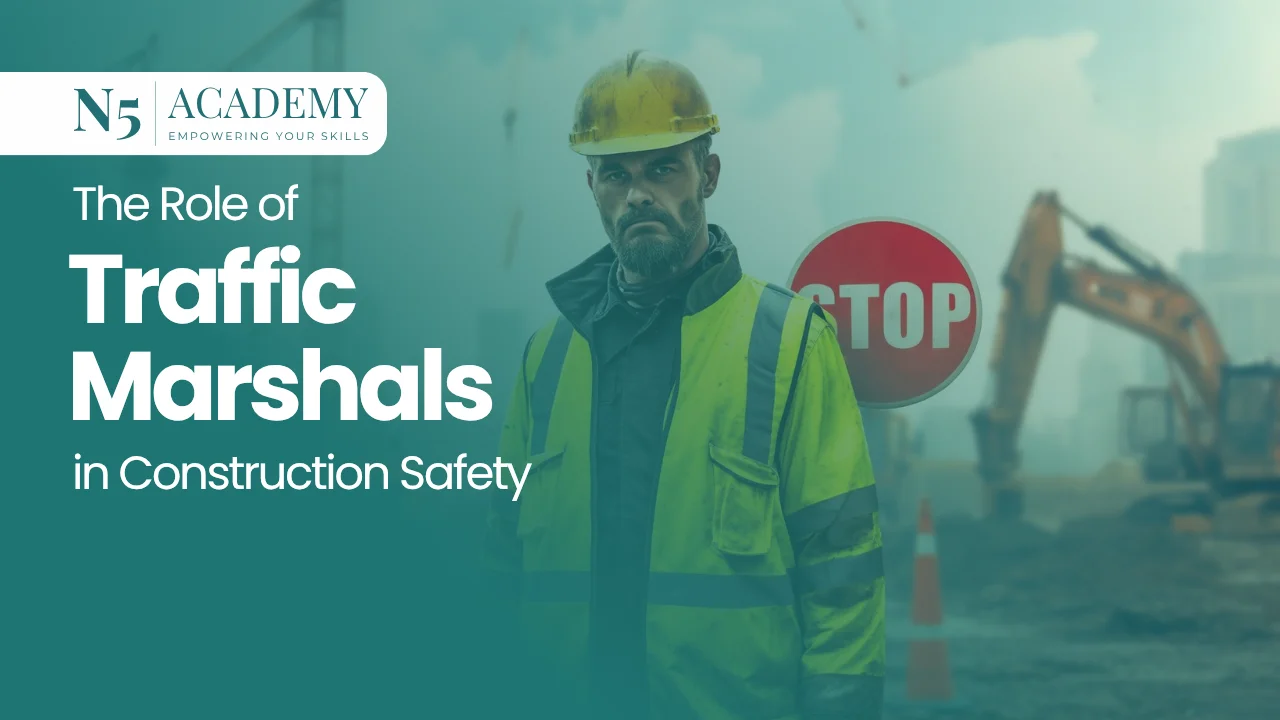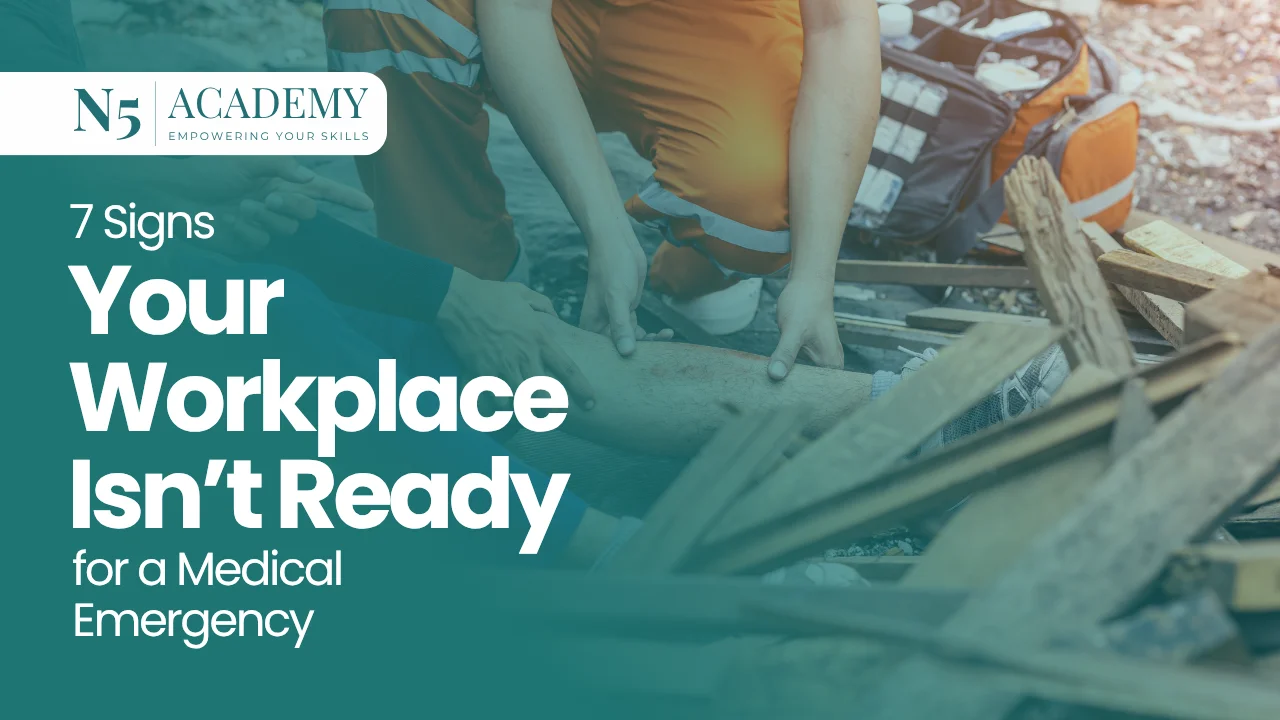

Emergencies happen without warning. One moment, everything is fine, and the next, someone could be unconscious, choking, bleeding, or having a heart attack. Many workplaces in the UK think they are ready for emergencies, but the real test comes when time is critical. Even with good intentions, many organisations unknowingly put their employees at risk by missing important parts of emergency preparedness.
How can you tell if your workplace is truly ready for a medical emergency? It’s not enough to have an old first aid kit in a cupboard or a poster on the wall. You need to build a safety culture that helps your team act quickly and correctly when someone’s life is at stake.
Let’s look at 7 key signs that your workplace may not be prepared, along with some hidden dangers and overlooked practices. Whether you are a small business owner, office manager, or team member, this guide will help you identify weaknesses and take steps to improve safety in your workplace.
One clear sign of a dangerous workplace is when few or no employees know first aid. In an emergency, every second matters. Untrained workers might freeze, make bad choices, or hesitate to help, leading to avoidable tragedies.
Every workplace should focus on ongoing, certified training for all employees, not just a few. Teams should be encouraged to take first aid courses that fit their specific needs. A 1-day course is good for low-risk jobs, while high-risk industries like construction or hospitality should consider a 3-day course.
Don’t wait for an emergency to act. Make sure your team joins an accredited emergency first aid course. These essential skills can be lifesaving.
If your first aid kit is behind a locked door, missing important items, or no one knows where it is, you are not prepared for emergencies.
Many workplaces keep first aid kits in hard-to-reach spots or only in one department, which is not effective.
Worse still, some kits have expired supplies, used bandages, and unsealed items that can be unhygienic.
A good first aid kit should be:
Consider having kits in several locations, especially in large or multi-floor workplaces. Also, remember to include speciality kits like burn kits in kitchens or chemical spill kits in labs. These small steps can significantly lower risks.
When did your team last practice for a medical emergency?
Without regular drills, even the best plans can fail. Emergencies cause adrenaline and panic, so muscle memory is important.
Simply having a response plan or writing protocols isn’t enough. Teams need to practice and improve their responses regularly. Schedule drills every three months. Conduct tabletop exercises. Include scenarios that match your workplace hazards.
N5 Academy offers basic life support training to help staff respond quickly and confidently in emergencies.
UK Health and Safety Executive (HSE) guidelines state that most workplaces need to have a designated first aider or someone in charge during emergencies.
If your main first aider is unavailable, who steps in? A gap in your response team can be dangerous.
Make a schedule. Find backup first aiders and make sure they are certified and trained. It’s also a good idea for everyone on the team to know who is in charge during emergencies.
Encourage staff to take formal training, like our first aid at work course, to ensure you have coverage at all times.
Sudden cardiac arrests kill over 30,000 people in the UK each year. Early use of a defibrillator can raise survival rates to 75%. Still, many businesses do not have an AED.
Don’t treat AEDs as optional. If your workplace doesn’t have one, get one. If you have one, ensure that:
AED training is often part of first aid courses at work and only takes a few minutes to learn.
A broken tile, slippery floor, or exposed wire may seem minor, but they can lead to serious injuries. Most workplace accidents come from avoidable hazards. Trips, falls, and collisions are among the most common and expensive injuries in UK workplaces.
A proactive workplace does the following:
If you wait for someone to get hurt before fixing a problem, you risk safety and legal issues. Good housekeeping combined with training helps. Staff who know first aid risks are more likely to spot and report hazards quickly.
The term “medical emergency” often brings to mind images of blood or broken bones. However, psychological emergencies are just as serious. Suicidal thoughts, panic attacks, and emotional breakdowns can be life-threatening. These situations need immediate attention and understanding, not silence or stigma.
Employers should:
Many workplaces in the UK are now adding mental health emergency protocols to their physical first aid policies. This includes calm zones, trained listeners, and crisis helplines.
Mental health is part of overall health. Your response systems should reflect this.
Many workplaces depend on hope for safety. They believe, “That won’t happen here,” and think, “We’ll handle it if it happens.” But when an emergency occurs, they are unprepared.
To be ready for emergencies, you need:
Don’t wait for a near-miss to take action. Make planning a core part of your organisation. N5 Academy offers training, from fire marshal to traffic marshal courses, to help build resilience in your team.
Generic training is better than nothing, but it often isn’t enough.
Training that resembles your work environment helps people remember what to do and perform better in real situations. Choose a one-day or three-day first aid course that includes:
At N5 Academy, we create courses that provide knowledge and build real confidence. Your team will feel ready, not anxious.
Recognising workplace emergency signs is the first important step. But noticing them without taking action is like seeing a fire and ignoring it.
The safest workplaces are not just those with few incidents but those ready to deal with emergencies.
N5 Academy can help you with training, kits, risk assessments, or full emergency response plans. We offer:
Take action now. Keep your people safe. Create a culture of readiness.
We help you forge a successful career in health and safety. We’re a UK-based company providing top-notch safety training courses that adhere to industry standards.